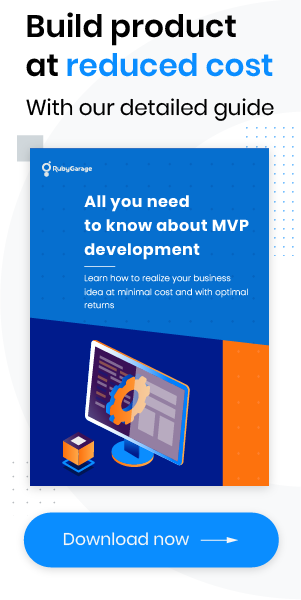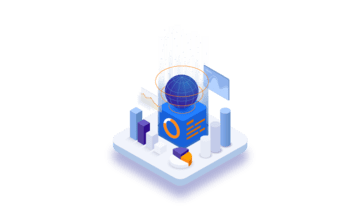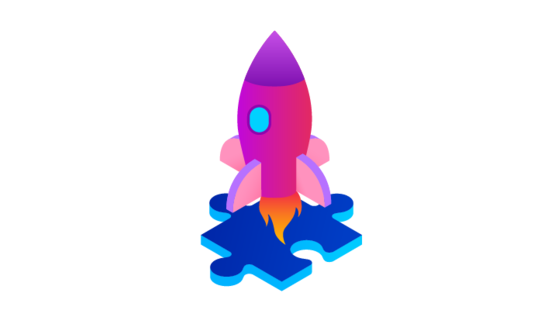-
Product Management
Software Testing
Technology Consulting
-
Multi-Vendor Marketplace
Online StoreCreate an online store with unique design and features at minimal cost using our MarketAge solutionCustom MarketplaceGet a unique, scalable, and cost-effective online marketplace with minimum time to marketTelemedicine SoftwareGet a cost-efficient, HIPAA-compliant telemedicine solution tailored to your facility's requirementsChat AppGet a customizable chat solution to connect users across multiple apps and platformsCustom Booking SystemImprove your business operations and expand to new markets with our appointment booking solutionVideo ConferencingAdjust our video conferencing solution for your business needsFor EnterpriseScale, automate, and improve business processes in your enterprise with our custom software solutionsFor StartupsTurn your startup ideas into viable, value-driven, and commercially successful software solutions -
-
- Case Studies
- Blog
How to Conduct Product Discovery Process in 4 Steps
You’ve got an idea for a new project or would like to make improvements to an existing solution. How can you be sure your ideas are worth the effort? While nothing can guarantee 100% success, product discovery maximizes your chances of producing a commercially successful product. No guessing or underestimating risks: align every decision with customer demand.
In this article, you will get familiar with the product discovery process, its goals, key steps, and outcomes. Additionally, we will explain how we run the product discovery phase at RubyGarage to get our clients development-ready.
What is product discovery?
Product discovery is an iterative process of reducing uncertainty around a problem or idea to ensure the right product gets built for the right audience… It is also the foundation for a successful implementation and launch phase later.
Herbig points out that during the discovery phase, the team focuses on building the right thing instead of on building the thing right (which is the goal of product delivery).

The discovery process traditionally lies in the problem space and solution space. The problem space is where the team defines what problems exist for users, buyers, and stakeholders. Working in the solution space, the team focuses on creating a solution for the described problems and goals. However, the discovery phase should also cover one more area — the business space. Before starting to create the product, we need to ensure that our chosen development strategy matches our client’s business goals.
At RubyGarage, our team has two areas of focus during the product discovery phase. Our primary focus is building the development strategy for product implementation. The second is matching the client’s business goals with market capabilities through the chosen product vision.
Why is the product discovery process a must?
A discovery phase helps eliminate incorrect market assumptions before jumping into development. However, building a unique and exciting product is not enough. It’s vital to align your solution with actual customer needs if you have serious plans to succeed in the long run. Here are the key benefits you can get from product discovery:
- Value-driven approach. Build a product that’s vital to customers, not just nice to have. Product discovery reveals your product’s unique values that will ensure competitiveness and business success.
- Identify the optimal solution. Focus on a deep understanding of the fundamental problems that need to be solved. Don’t waste your budget on developing features that bring no value to users.
- Cost-effectiveness. High-quality product discovery significantly reduces the cost of product development. A complete understanding of the product’s environment, target audience, and business model minimizes uncertainty during implementation.
- Product strategy-oriented. You can build the product’s strategic vector based on knowledge of the market, niche, target customers, and their problems. A well-thought-out strategy helps you keep your product up to date and thriving.
- Discover and minimize risks of failure. Higher certainty in user needs helps minimize value and usability risks. The correct development strategy minimizes product feasibility and business viability risks.
- Faster time to market. Instead of testing ideas in the post-delivery phase, with product discovery you can dismiss non-viable hypotheses during the discovery phase. As a result, you can release the final product to consumers faster.
- Agility. Product discovery is an essential part of the software development life cycle (SDLC). It is based on Agile methodologies focused on achieving goals quickly and accurately. The initial discovery phase removes numerous misconceptions or incorrect assumptions, minimizing uncertainty throughout the development process.

When do you need product discovery?
Basing product development on assumptions is risky. Whenever the team is uncertain about what to build, for what customers, and why, it’s time to get meaningful answers using product discovery. Here are the situations when the team needs it:
- New product development. If you have an idea for a new product, investigate your potential customer segments and study their problems to build what they need.
- Upgrading an existing product. Adding new functional modules or upgrading existing ones requires product discovery. Additionally, it helps you discover what features can attract new customers if you plan to create and launch a new product version.
- New business opportunities. If you plan to expand your business by launching products in new markets, product discovery may help you research the target audience, competitors in new markets, the product scope, and changes to meet local audience requirements.
- Acquisitions or mergers. Product discovery focuses on identifying mutual problems and finding suitable solutions when companies merge to consolidate resources and processes.
What team do you need to run the product discovery process?
Product discovery is a team effort. Cross-functional collaboration between different roles is the approach we follow at RubyGarage. Here are the key members involved in the process:
- Client: sets goals, approves ideas, and manages the budget
- Project managers: manage and schedule meetings, collect information, create and manage documentation, and coordinate the team
- Business analysts: analyze collected research data, identify market trends, and present solutions
- Solution architect: builds the solution strategy for each stated problem
- Tech lead: determines the technical feasibility of discovered solutions, makes decisions regarding the required tech stack, and supervises developers
- UI/UX experts: create the UI/UX for the chosen solutions
- Backend engineers: provide estimates for backend tasks in the feature breakdown list and generate and assess solution ideas
- QA estimators: provide estimates for quality assurance tasks from the feature breakdown list
Another essential participant in the product discovery process is the customer. Customers source the research phase with valuable information from their experience and give insights for creating new solutions. In addition, actual customer feedback on delivered prototypes is vital for the following product development iterations.

The team members and their involvement vary depending on the project’s complexity and goals. Defining who needs to be directly involved in each stage is vital to successfully completing all product discovery steps. In addition, it will help the team properly book the time for synchronous meetings and avoid delays through the discovery flow.
Involving team members from the C-level, product, design, and engineering groups brings a holistic view of each problem, ending with results that work for the whole team.
Product discovery steps
Often, product discovery is not a linear process, as the team may go through the same stages more than once until they get the desired results. However, the classic Agile product discovery process consists of the following steps:

The core goal of the product discovery process is to define and understand the customer’s problem and plan to-dos to produce a winning solution. The RubyGarage team has adapted the flow above to maximize discovery outputs with minimum effort from the client. We perform the steps below in one to three weeks. The exact time frame depends on the project’s complexity and scale.
Here is our initial product discovery flow step by step.
Step 1. Product alignment
Participants from different domains and management levels are involved in the discovery process. That is why it’s essential to ensure proper alignment on all levels. At the initial product discovery stage, the client and other team members should focus on defining the critical problem and collecting enough context to study it and produce a solution.
At the alignment stage, communication between stakeholders and product managers is key, as it provides the input for further research and ideation. At this stage, the client should describe the problems and express their goals instead of interpreting them and suggesting possible solutions.
At this product discovery step, our team begins to fill in the lean canvas:

A lean canvas helps you evaluate the market and the specific problems to be solved. It also helps you define the value proposition for your business and a solution to bring the planned results. We’ve added one more significant section to the classic lean canvas layout: Competitors. It’s crucial to analyze direct competitors before producing new features or planning an entirely new product because we need to find unique competitive advantages. These make the product interesting for customers, encouraging them to choose your solution over others. While there can be products with similar features, the one you’re going to launch should be different in an exceptional way. Analyzing competitors helps you find potential unique value propositions.
A completed lean canvas is one of the deliverables of the product discovery process. It will be filled with your findings as you pass through the discovery process steps, summarizing the entire scope of work during product discovery. Learn more about our lean canvas for evaluating business ideas to get a fuller understanding of this concept.
Step 2. Research & elicitation
After the discovery team clearly understands the problems and intents of stakeholders, it’s time to match them with market opportunities and existing demands and pain points of potential customers. Therefore, the next step of product discovery is researching and interpreting findings into technical and business language. Again, a holistic approach to research should be applied to analyze conditions and ideas from all sides, including:
- Market analysis: analyzing the market size, points for growth, trends, and key players in the target niche
- Competitor analysis: defining direct and indirect competitors; analyzing their strengths and weaknesses, what value they bring to customers, and how
- Target audience analysis and segmentation: analyzing the types of customers who will buy your product
Appropriate research methods should be selected based on the research questions. For example, check the set of market research methods we use to analyze the market niche, competitors, and customers for a new product.
One possible outcome of competitor analysis is a functional decomposition of a competitor’s products with feature set lists for each direct competitor. The initial research goal defines the decomposition depth. For instance, decomposition can be done for specific user roles or for all existing user roles, or it can contain the general product feature set.
In customer analysis, only a combination of research methods gives a fair outlook on customers’ behavior and needs. There’s a big difference between people’s words, actions, thoughts, and decisions. That is why we highly recommend researching customers in four directions:

The output of customer research is buyer personas — a set of typical customer portraits, each describing a category of target user for the future solution.

Step 3. Coming up with a solution
While the previous two steps of product discovery were related to the problem space, at this stage, the team focuses on elaborating a solution.
While brainstorming techniques can help you formulate ideas, there are certain pitfalls:
- Attempts to think outside the box often fall into existing stereotypes.
- When an okay idea appears during team sessions, participants tend to agree and go with it instead of generating better ideas.
That is why we practice a together alone approach when each team member involved in the ideation process thinks deeply from their own perspective before group discussions and then presents ideas to the team.
Based on research phase findings, we work through the following aspects of the solution:
- Product business model: A complete, detailed business model for the solution based on the lean canvas framework
- Solution concept definition: A description of the solution, its value, and major functions to form the basis of your product strategy
- User roles: A description of user types with permissions, features available to each type of user, and typical user journeys throughout the application
- Product feature breakdown list: An in-depth functional decomposition of the solution
These are the key deliverables of the solution phase that may also be accompanied by other documentation based on product specifics.
Step 4. Estimation & planning
Estimation of the project scope and the implementation plan are essential to moving from ideation to development. The goal of the product discovery process is to produce a development-ready solution, not just an empirical concept with an unknown technical background. Therefore, a business analyst, backend and frontend engineers, UI/UX designers, and QA specialists work together to produce the following deliverables:
- Estimate for development of prioritized product features
- MVP scope design (the set of features to develop first)
- Proposal for the technology stack most appropriate for the product’s complexity and performance requirements
- Suggested post-MVP scope (development of the full product version)
- Defined project team set and their schedule
- Estimated cost for the MVP and full product version development
- Recommended AWS hosting plan and cost (a comprehensive proposal for deploying server infrastructure for your product)
Client onboarding is one more important thing to include in the initial product discovery plan. It ensures the client’s team is comfortable with the results and understands all discovery findings.
Moving from discovery to product design
The project is ready for development when your product idea is properly elaborated through the initial product discovery steps. In the case of a new product design, those steps are:
- Developing an MVP
- Launching a prototype to market and collecting customer feedback
- Evaluating the feedback to define improvements for the next iterations
- Implementing improvements
It is the classic lean startup cycle that leads the team to produce the full product version:

You may think that the path from prototype to final product is endless. But keep in mind that the product discovery process significantly reduces the number of development iterations (or even reduces it to one).
If you need your product to be implemented by professionals, hiring a team that is already in the loop makes sense. If you delegate the discovery phase to us, we can work with you on implementing your project after the discovery phase is completed.
Running a product discovery process in remote teams: practical tips
Delegating product discovery to a remote team is reasonable if you lack in-house resources or the experience to run this process yourself. Here are helpful tips from our practice on making the most of your remote cooperation.
- Keep the commercial value in mind throughout the entire process. Product discovery is a tool to reach business goals through solving customer problems.
- Do not over-research. It’s often hard for a team to limit research to only what is needed for the required deliverables. Always keep in mind that every effort should be justified with the result.
- Ideas follow research. Don’t generate ideas before your team clearly understands the problem space and the market value.
- Stay involved when outsourcing: an outsourcing team can help run an efficient product discovery process, yet you are the lead decision-maker. To decide wisely, cooperate with the team closely. <
- Involve developers. In value-driven product creation, developers should deeply understand the product’s intent and end users’ expectations. Moreover, developers can give ideas for essential features and choose the right technologies to make the product shine.
Choose a contractor with extensive experience in product discovery and design to ensure your remote team has properly elaborated all communication and delivery processes. As a result, the discovery flow will run comfortably and productively.
Final thoughts
The era of guessing what your end users need is over. Today, you can get the most detailed overview of market conditions as well as customer pains, needs, wishes, and behavior. Then you can turn those findings into solution ideas that will match customer demands and help you reach your business goals.
To get this perfect match, make sure to conduct a well-thought-out and well-organized product discovery process before development starts. Discovery and delivery flows running in parallel form the continuous build–measure–learn environment. This environment ensures timely improvements to cope with changing market demands and stay competitive in the long run.
FAQ
-
It is a process that helps product design teams deeply understand the problems of target audience and find the best way to solve them within their product.
-
It depends on your contractor's expertise and project complexity. At RubyGarage we usually need from one to three weeks to conduct the full product discovery for our clients.
-
You risk to develop a product that doesn't meet your business goals due to improper market-fit. Bloated budget, missed deadlines, scope creep are most common issues startups experience when ignoring the product discovery phase.










